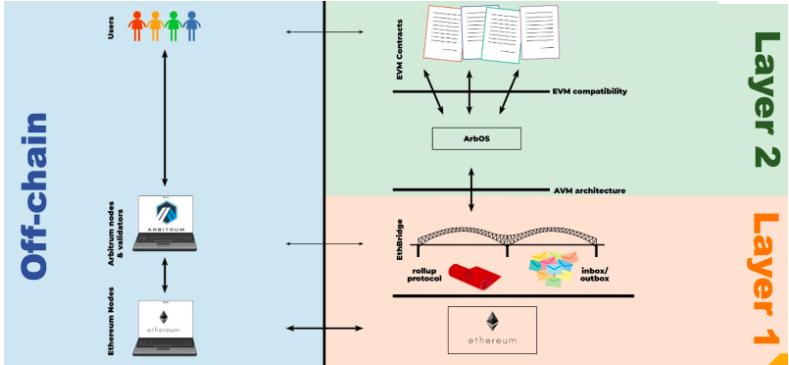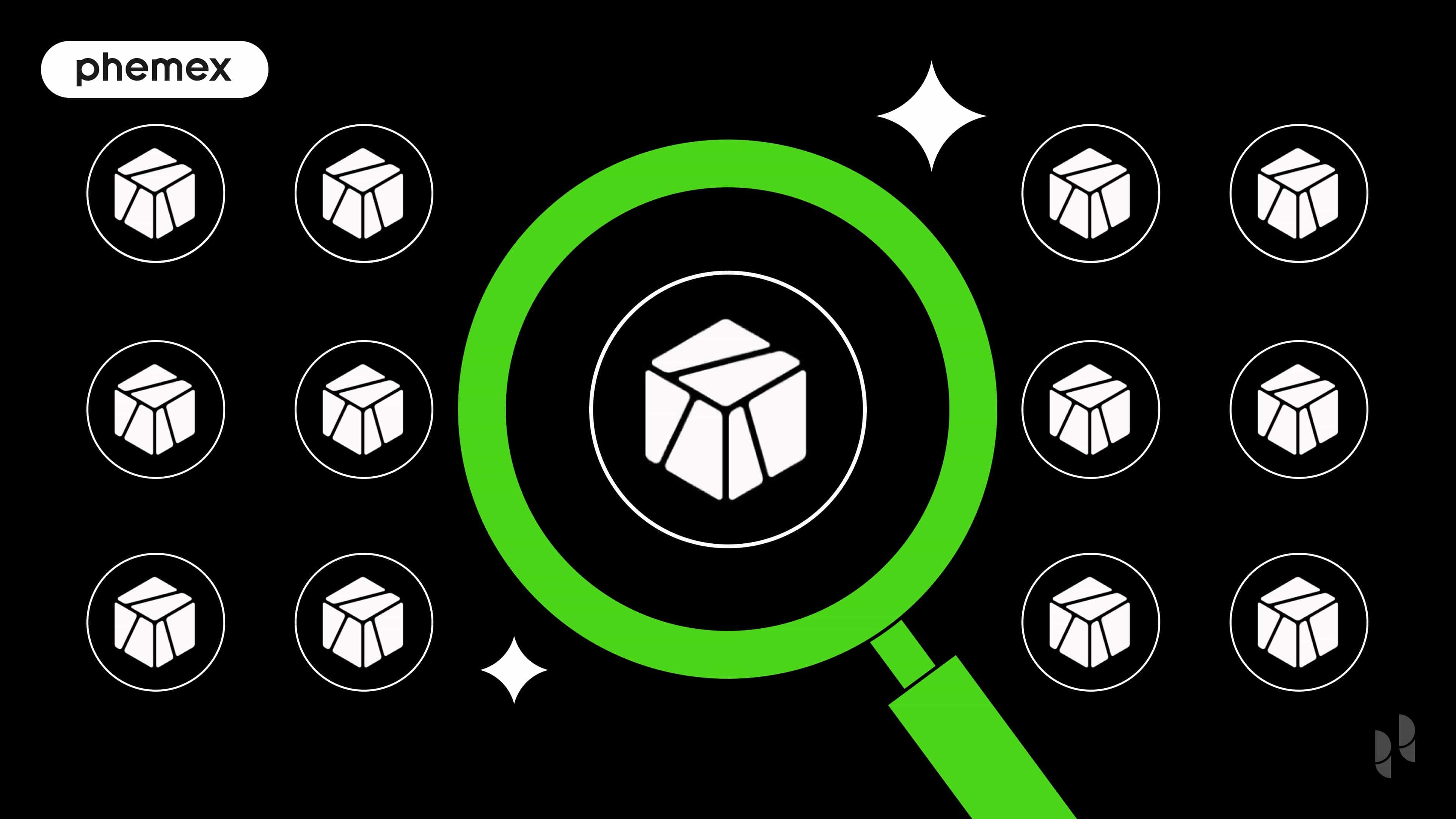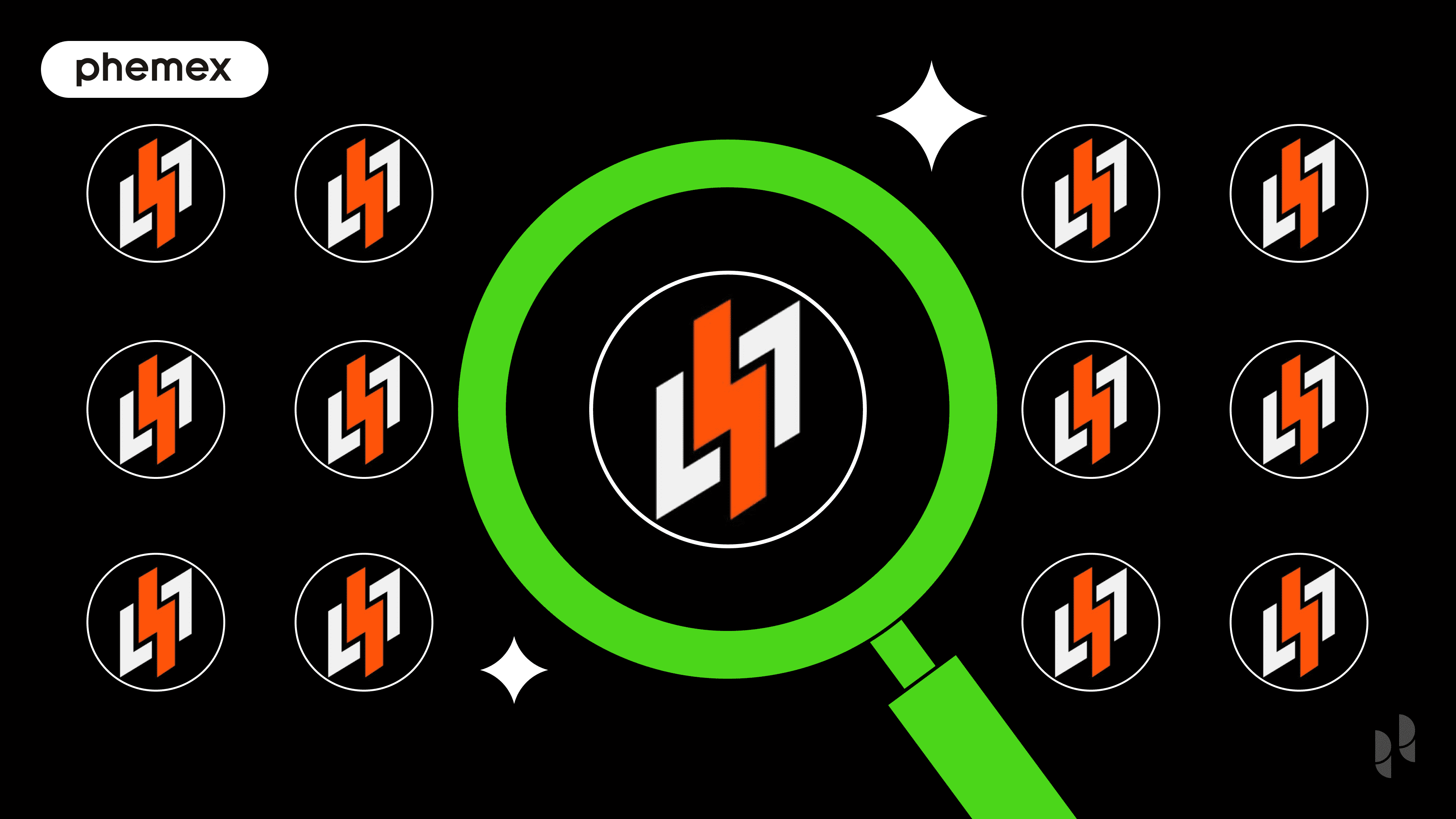Blockchains offer increased security for transactions, asset storage, and more, as well as offering their users the chance to have more control over their digital assets by being decentralized. However, many blockchains are becoming hugely congested, which has led to much slower transaction speeds and, consequently, high gas fees.
In an effort to speed up and streamline this technology, without compromising on security or user experience, developers have created innovative Layer 2 scaling solutions. One such solution is Arbitrum.

What Is Arbitrum?
Arbitrum is a Layer 2 solution for Ethereum (ETH) — the largest blockchain for decentralized applications (DApps) in the world. According to the Arbitrum white paper, it was launched in August 2021 by Offchain Labs to much anticipation, and was near-immediately adopted by some of the biggest names in the decentralized finance (DeFi) space, such as AAVE, Curve, SushiSwap, Balancer, Band Protocol, and UniSwap, to provide lower gas fees and faster TPS.
As it was primarily designed for Ethereum, this Layer 2 solution was launched for Arbitrum smart contracts, in that it was built to help streamline the automation of smart contracts on its own platform while still relying on the Ethereum blockchain’s robust security. Arbitrum rolls up multiple smart contracts or transactions into one and then submits them to Ethereum in the same way as any Layer 2 solution. However, its specific combined offering of security, scalability, low cost, and compatibility with Ethereum are why it has had such widespread adoption.
Arbitrum offers:
- Trustless security: Arbitrum benefits from being built on what of the most secure blockchains around — Ethereum.
- Compatibility with Ethereum: As the blockchain running the most amount of DApps, ensuring that all developers and crypto traders can work with DApps on Ethereum is a huge benefit.
- Scalability: By moving storage and computations off the Layer 1 blockchain, Arbitrum allows for much faster TPS and lower gas fees.
- Low cost: Built specifically to lower gas fees, which are notoriously high on Ethereum, the Arbitrum rollup can offer users much lower per-transaction costs.

How Is Arbitrum Structured?
Arbitrum relies on the Ethereum network for security and adoption. However, it’s its own structure that allows it to take over some storage and computation functions from the primary network and thus offers a faster and more cost-effective solution.
How does Arbitrum scale Ethereum?
To understand how Arbitrum is able to offer such low gas fees and fast transaction times compared to its Layer 1 blockchain, Ethereum, one must look at its structure.
Arbitrum is built in layers to both connect and separate it from Ethereum. Working from the bottom up, it goes like this (use right-hand side of below image for reference):
1. Arbitrum Layer 1
The bottom layer (shown on the right-hand side of the below image) is Layer 1 — the primary blockchain of Ethereum. This is where Arbitrum gains its security.
2. Arbitrum Bridge
This Arbitrum bridge that connects to Ethereum, is formed up of multiple smart contracts. This creates an Arbitrum chainlink between Layer 1 and Layer 2 and allows for an automated management of the Arbitrum chain through the smart contracts. The EthBridge, or Arbitrum bridge, also referees the Arbitrum rollup protocol, which in turn ensures that the layers above it operate effectively. The Arbitrum bridge also contains Arbitrum’s inbox and outbox — allowing for users and contracts to send messages to the chain for processing. This bridge is key in Arbitrum’s operations.
3. Arbitrum Virtual Machine (AVM) Architecture
This component works together with the Arbitrum bridge, but its main function is actually to separate Layer 1 from Layer 2 — thereby ensuring scalability. It ensures that Layer 1 (Ethereum and the Arbitrum bridge) focus on the ideas and messages that come from the inbox/execution/outbox, while Layer 2 (Arbitrum) focuses on executing them. In this way, the computing power is mainly used in Layer 2, as opposed to in Ethereum, which requires higher gas fees and has much slower TPS.

4. ArbOS
This software program runs completely on the Layer 2 and functions as a regulator and record keeper. ArbOS ensures that the smart contracts are operating correctly, that records are stored, and that actions and transactions are being effectively executed.
5. Ethereum virtual machine (EVM) compatibility
This layer is what makes Arbitrum so widely adopted. Most DApps and smart contracts are deployed on Ethereum, thus, to ensure ease of use, Arbitrum has adopted EVM compatibility. This means that developers can write their contracts in the same way as they would on Ethereum, or even simply take their Ethereum contracts and relaunch them on Arbitrum at a lower cost and with faster transaction speeds.
6. Arbitrum Smart Contracts
At the very top of the layered scaling solution, are the Arbitrum smart contracts — i.e., those smart contracts launched on Arbitrum by developers. All Arbitrum smart contracts are Ethereum compatible through the EVM.
 The Arbitrum network’s architecture. (Source: Arbitrum white paper)
The Arbitrum network’s architecture. (Source: Arbitrum white paper)
Is there an Arbitrum cryptocurrency?
In terms of Arbitrum crypto, there is no Arbitrum token or Arbitrum coin, with the network instead focusing solely on delivering scalability solutions. Traders and investors who are looking to benefit from Arbitrum on a financial level are therefore better off buying ETH — as the better Arbitrum is able to scale Ethereum, the higher the value of ETH will become.
Arbitrum Rollup Protocol
Arbitrum relies on Ethereum for its blockchain security, however, it does also have some checks in place itself. The Arbitrum rollup protocol works behind the scenes to confirm the transactions that have already taken place on the Layer 2 network. This happens in the following way:
- Once a transaction is made, a message will appear in the Arbitrum bridge inbox confirming it. However, a user could be lying about the result of the transaction. Thus, Arbitrum rollup then works as a decentralized and trustless validation method for the system.
- The Arbitrum rollup protocol uses validating nodes to confirm every transaction in the same way as a blockchain does. However, it keeps this process off Ethereum in order to maintain Arbitrum’s original function of scalability. This system therefore works by validating a chain of rollup blocks (bundles of smart contracts or transactions), as opposed to blockchain blocks.
What Are the Other Layer 2 Alternatives to Arbitrum?
Despite Arbitrum’s success, it’s far from the only Layer 2 scaling solution on Ethereum. Some of the most notable include:
- Polygon: This scaling solution uses sharding, whereby it moves Ethereum’s DApps onto a system of interconnected blockchains, including both standalone blockchains and secured chains.
- Cartesi: This scaling solution is also geared toward DApps, using a hybrid model that incorporates both on-chain and off-chain components to increase speed and lower gas fees, as well as offer increased flexibility to developers.
- ParaState: Another multi-chain smart contract platform, this scaling solution aims to bridge Ethereum with high-performance blockchains such as Polkadot, Substrate, and others in order to spread the load and increase efficiency.
- Optimism: This scaling solution is the most like Arbitrum. As a rollup protocol, it also works by bringing all the data together, rolling it up, and then verifying it to check for fraud before sending it to Ethereum. This is much faster than blockchains and sidechains as there is no need to mine and distribute before validating.
- xDai Stable Chain: xDai is perhaps one of the most autonomous of the scaling solutions on Ethereum, operating as a sidechain, it has its own proof-of-stake (PoS) consensus mechanism and even its own native token, xDAI.

List of notable Ethereum Layer 2 solutions. (Source: 101blockchains.com)
Conclusion
The Arbitrum Layer 2 scaling solution for Ethereum is a versatile and powerful tool that has appealed to big players in the crypto space, including the likes of AAVE, Curve, UniSwap, SushiSwap, and more. Its technology has been built to be completely Ethereum compatible, meaning that developers can easily transfer their DApps over to benefit from faster transaction speeds and lower gas fees. Apart from scalability, Arbitrum’s lack of an Arbitrum token or Arbitrum coin is also highly beneficial for Ethereum’s value, as the better its scalability, the higher ETH’s value.
Ethereum has robust security and the best groundwork in place for developers to build and launch their DApps, but unfortunately its high fees and slow processing time are making it ever-less attractive. Thus, if Arbitrum can facilitate usage of this powerful blockchain, we will undoubtedly see an increased user-base not only for Arbitrum, but also Ethereum. This in turn would mean greater opportunities for developers, and consequently more innovation in the crypto space.
Read More
- What is Arbitrum & How does it Work?
- Top Layer 2 Projects on Ethereum - Arbitrum, Optimism, zkSync and more
- What Are Ethereum Layer 2 Solutions: Decentralized Scalability
- What is Cryptocurrency Arbitrage?
- ZK Rollups – A Solution to Ethereum’s Inefficiencies
- What is Ethereum Layer 2 & How does it Work?
- What is Sharding in Blockchain?
- What Are the Blockchain Layers? Layer 3 vs. Layer 2 vs. Layer 1 Crypto









